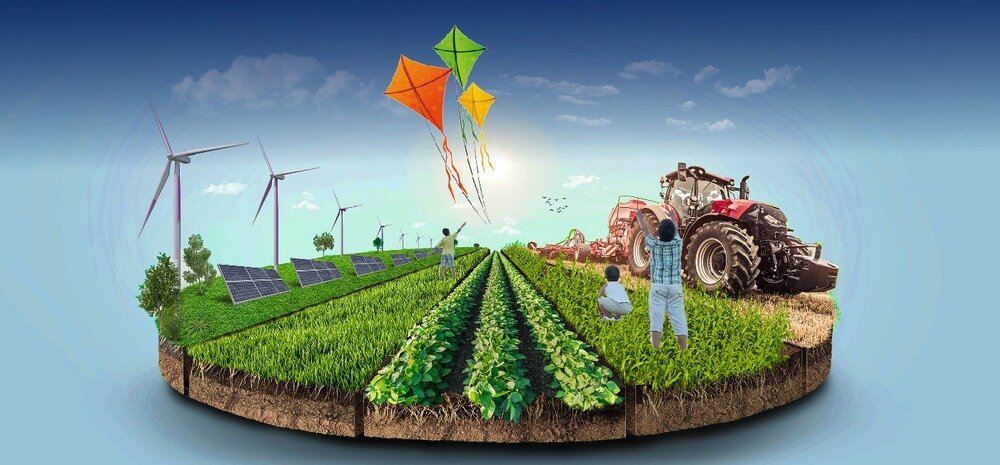As the Sun transitions from Sagittarius to Capricorn, it’s time for the air to crackle with the bonfires, colorful kites to fill the sky, and kolam (rangoli) to adorn the Earth. You can enjoy til and gur rewari, gajak, or Pongal while thanking the Sun and Fire God for a bountiful harvest.
Lohri, Sukarat, Bhogali Bihu, Pongal, Ugadi, or Makar Sankranti, call it by any name you like, but it’s celebrated with much enthusiasm all across India.
More Than Festivities
Makar Sankranti marks the harvest of Kharif crops like paddy and sugarcane and the harvest of Rabi crops: Wheat, barley, grams, maize, and more. As we hail its cultural and spiritual significance, let’s pay homage to the beating heart of India, agriculture.
India is primarily an agrarian land, and agriculture contributes 20.2% to India’s GDP, offers employment to 50% and above, and supports 60% of the population directly and indirectly while producing 330.5 million tons of foodgrains in 2022-23.
Want to know how we’ve transformed? Read on

Ancient Hands to Modern Equipment
When agricultural seeds were first sown in 9000 BCE, India stood as the foremost producer of wheat and grains, thanks to double monsoons to yield two harvests annually.
Then, agriculture evolved from row-cropping, grain storage, and cultivation during the Neolithic Revolution (8000-4000 BCE) to irrigation and canal systems during the Indus Valley Civilization (4500 BCE) and beyond.
The Mughal Era (1526-1757 CE) saw Indian agriculture spread to South Africa, the Middle East, and Spain, while the Colonial British Era (1757-1947 CE) saw commercial crop trade, agricultural reforms, irrigation systems, and tractors.
The Green, Yellow, and Blue Revolutions significantly boosted agricultural growth in India after 1947. The White Revolution transformed the dairy industry, making it a leading global producer.

Indian Agriculture is Global
Today, India is a powerhouse, standing second globally in wheat and rice production and a leader in cotton, sugarcane, etc, making it a crucial player in global food security.
As an agro-product exporter, India’s trade surplus exceeded $11.8 billion in 2021. Specializing in high-value commodities like Basmati rice and spices has increased its global footprint.

The Agri-Industrial Connection
The interdependence on the industrial sector is taking India ahead in the agri race. While manufacturing relies heavily on agriculture for its raw materials, nearly 50% of the industrial sector’s income comes from processing agricultural products.
This interdependence has led to the rise of prominent brands and businesses that depend on and shape the agricultural sector:
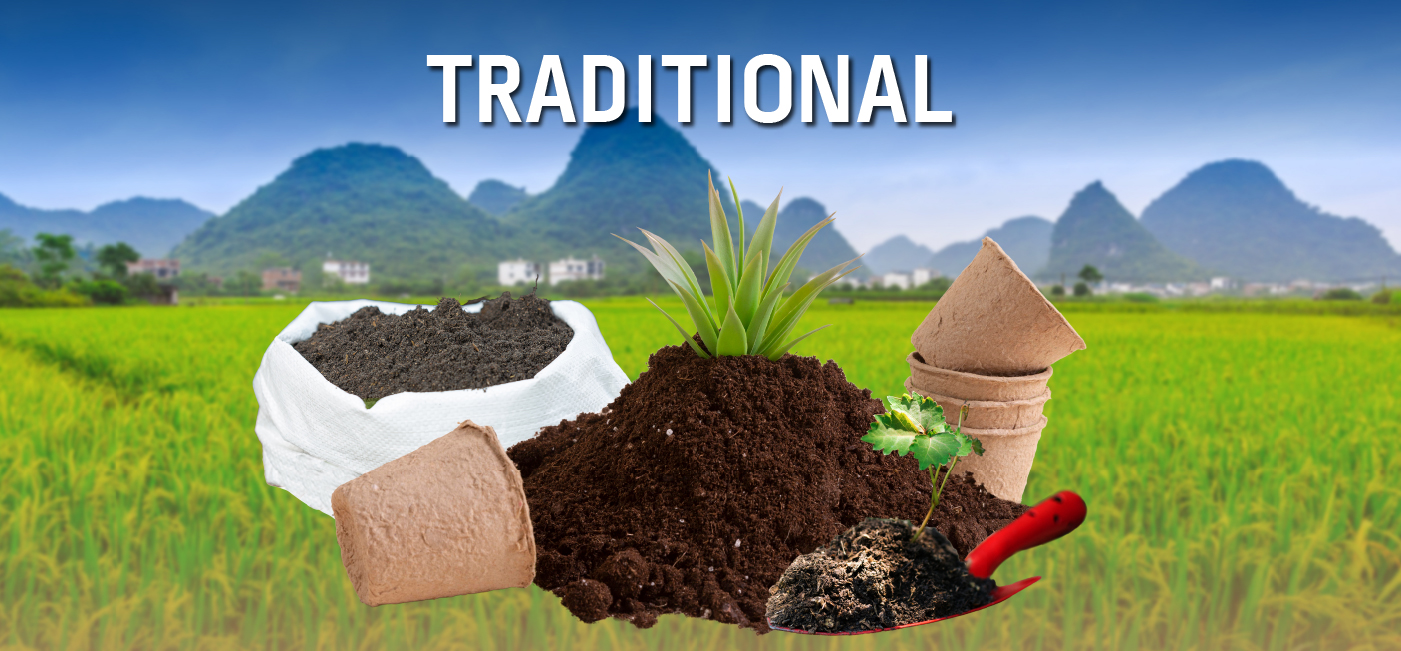
Players In The Agri Market
Mahindra & Mahindra offers tractors, implements, and farm services.
ITC Ltd’s ‘e-Choupal’ initiative revolutionized farmer connectivity; its ‘Farm Fresh’ brand brings quality agricultural produce to consumers.
Rallis India offers various agricultural products, from seeds and fertilizers to pesticides and plant growth nutrients.
Godrej Agrovet focuses on animal feed, poultry feed, and agri inputs like crop protection chemicals.
Kaveri Seed Company offers hybrid seeds for crops like maize, cotton, and paddy.
Mar 22, 2011
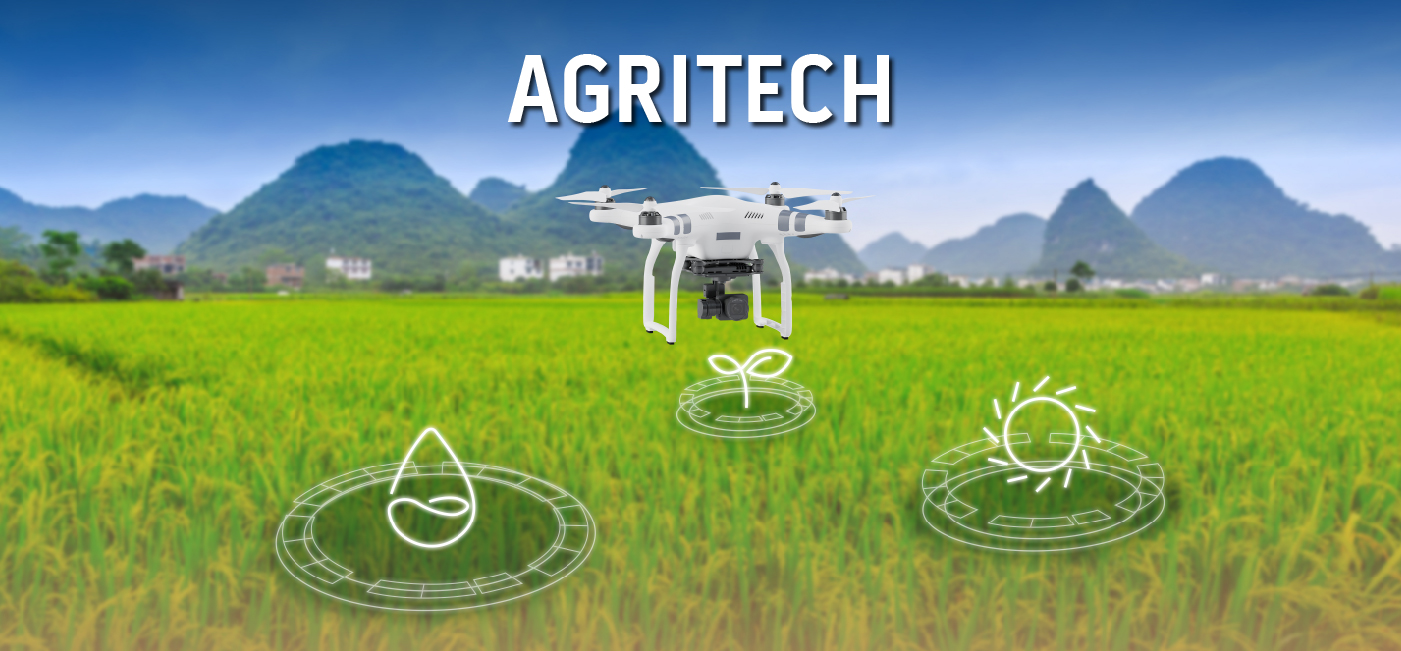
Startups Make Farming Easy
Ninjacart connects farmers directly to buyers, eliminating middlemen and ensuring better prices for produce. At the same time, CropIn gives farmers a digital farm management platform for data-driven decision-making and optimizing crop production.
AgroStar is a mobile app and website platform helping farmers access agricultural inputs, advisory services, and market linkages.

Sustainability Champions
Agro2o offers AI-powered climate-smart farming solutions, promoting sustainable agricultural practices, and Naturebowl focuses on organic farming and sells various organic food products.
Saffron Farming specializes in cultivating and selling high-quality saffron, while Solar Mango Tree helps farmers install solar irrigation systems, reducing their dependence on fossil fuels and promoting water conservation.
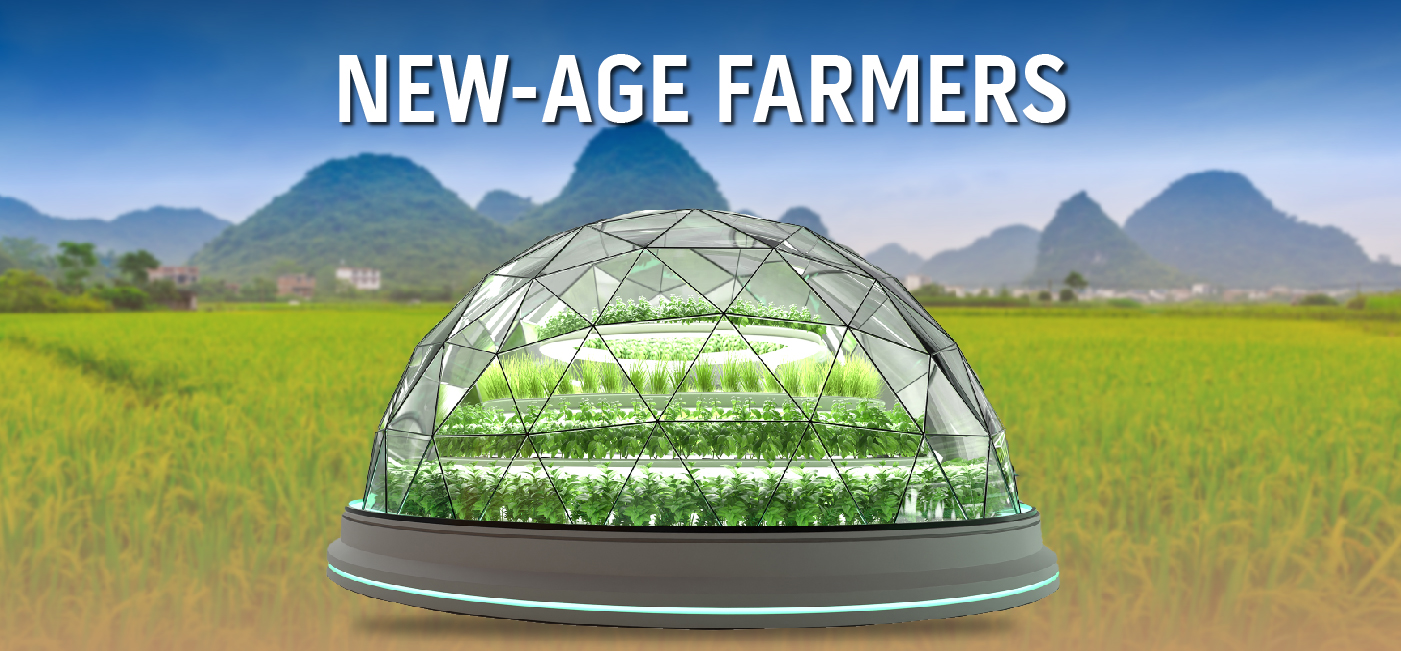
The Rise of Agripreneurs
Agriculture is gaining prominence again after a slump in the past 10 years. With tech in agriculture, India stands at the forefront of agricultural precision farming, with data analytics and sensors optimizing resource utilization.
Farmers now use drones to fly across fields, monitor crops (or spray pesticides with surgical precision), or genetically modify crops to get higher disease-resistant yields.
Technological advancement and youngsters in entrepreneurial roles in agriculture have placed the sector at the forefront, helping its related industries become highly profitable.
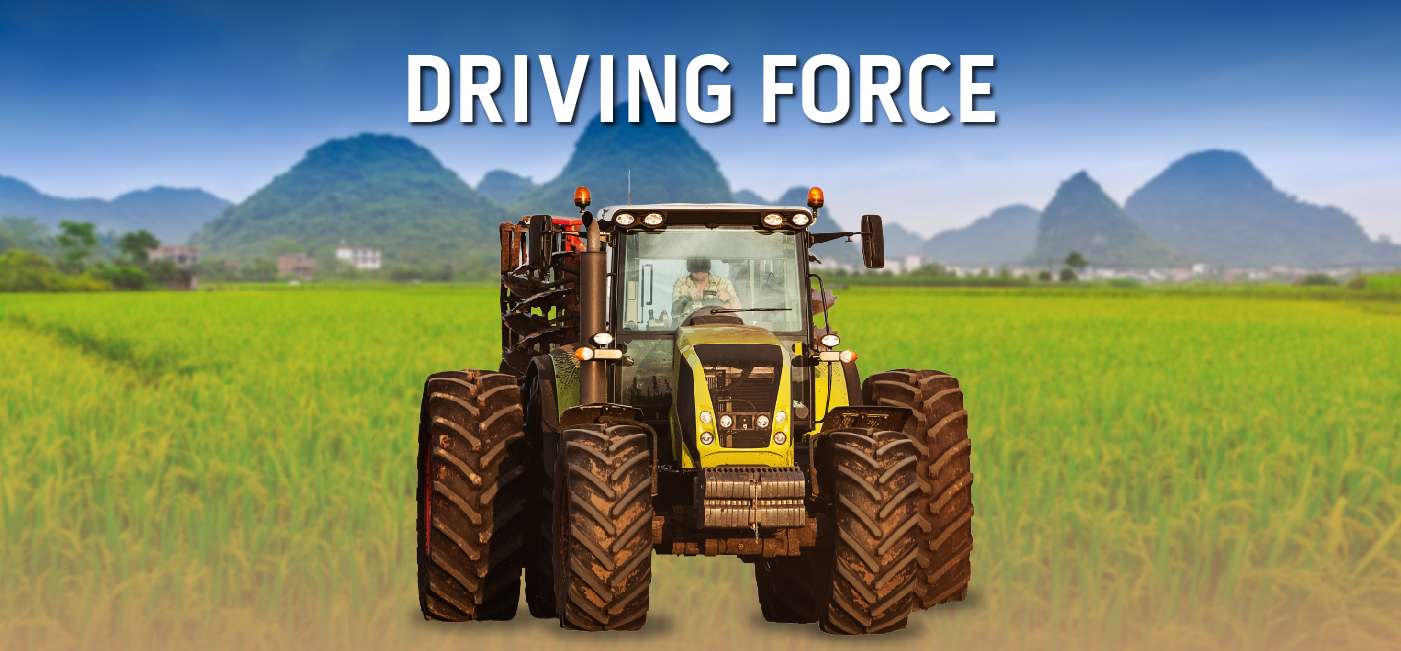
Heavy Vehicles & Tractors
Indian agriculture story would be incomplete without mentioning tractors and heavy vehicles.
First imported as a war surplus in the 1940s, the use of tractors surged in the 1980s-90s. Indian manufacturers like Eicher, Escorts, TAFE, Mahindra & Mahindra, and international players like John Deere and New Holland were among the few manufacturing tractors.
After the economic liberalization in the 90s, the Indian tractor market became one of the fastest growing globally, with 945,300 units sold in 2023 and an estimated value of $8.7 billion in 2023. This industry is projected to grow to $10.4 billion by 2027.
Government subsidies and loan schemes for farmers and farm mechanization programs like the National Mission on Agricultural Mechanization (NMAM) and the Sub-Mission on Agricultural Mechanization (SMAM) have led to the success of heavy vehicle usage.
The rising incomes, land consolidation, efficient and cheaper mechanization, new tractor models and heavy vehicles with advanced features, and rental services have also led to its boom.
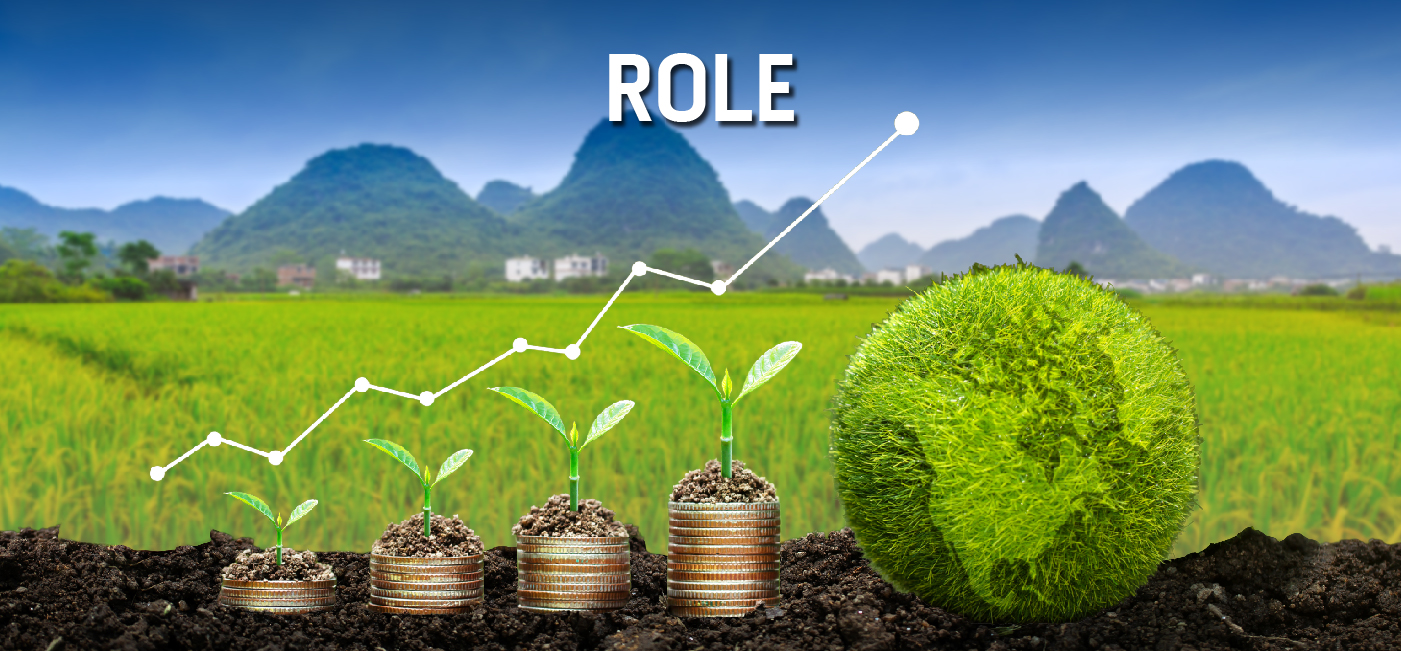
To Play in Investments
Agriculture’s role in India has gone beyond being a source of food and employment. It has become an essential sector for investment, with agricultural businesses like Fertilizers and Chemicals Travancore Ltd, Coromandel International, Bayer CropScience, and others gaining traction.
From crop production, farm equipment, seeds and fertilizers, and food processing to logistics, there are many companies to consider investing in.
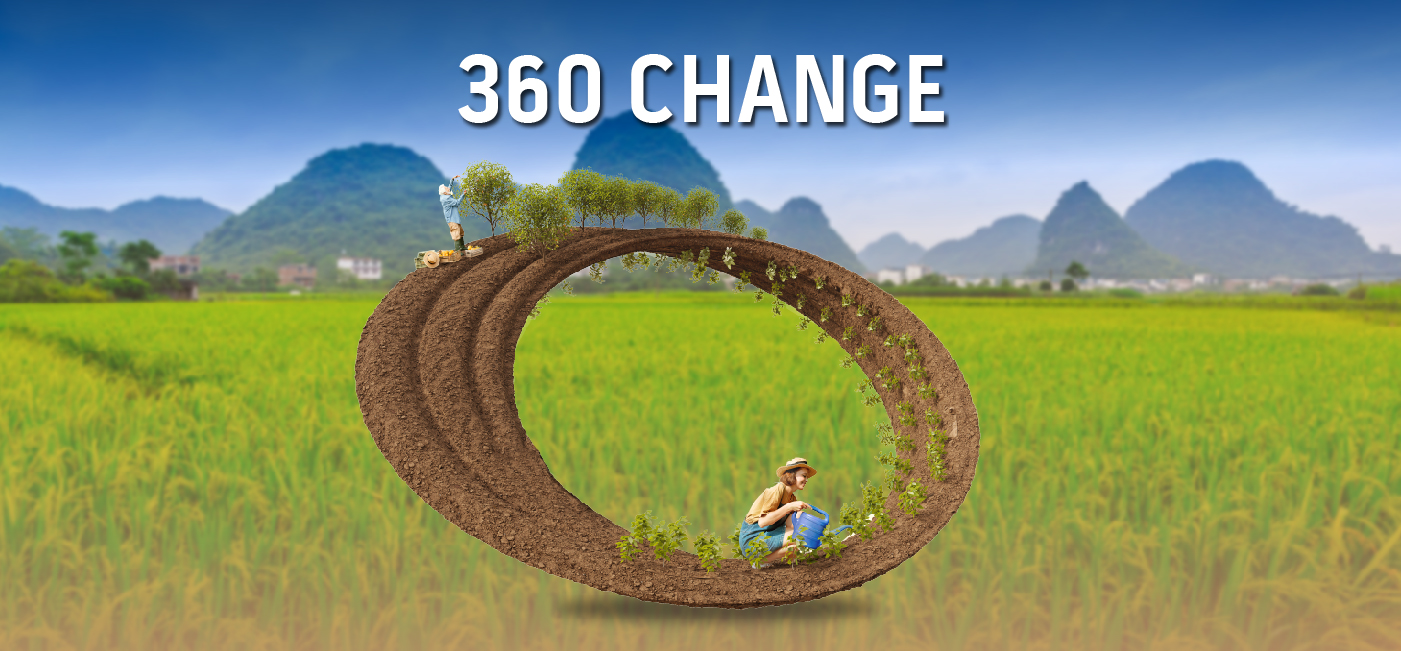
Agri Comes Full Circle
Amidst the march of technology, a quiet revolution is brewing. A demand for the purity of the past is making organic farming popular again.
In 2023, the Indian organic food market was valued at US$ 1,582.2 million.
Companies like Fabindia and NatureFresh have capitalized on this trend, bringing organic produce to urban plates with Ambrosia Organic Farm, Nature Bio Foods, and others leading the charge.
As these young agripreneurs prove that organic farming can be sustainable and profitable, others are weaving a new narrative – where technology and tradition find harmony with fresh, organic produce nourishing bodies and communities.
How useful was this post?
Click on a star to rate it!
Average rating 4.1 / 5. Vote count: 29
No votes so far! Be the first to rate this post.
waitfor delay '0:0:5'--
I’m Archana R. Chettiar, an experienced content creator with
an affinity for writing on personal finance and other financial content. I
love to write on equity investing, retirement, managing money, and more.
 Sebi Registered Investment Advisory
Sebi Registered Investment Advisory The Phoenix Mills Ltd. (PDF)
The Phoenix Mills Ltd. (PDF) Stocks Screener
Stocks Screener Trending Sector
Trending Sector Top Losers
Top Losers Current IPOs
Current IPOs Closed IPOs
Closed IPOs IPO Performers
IPO Performers Listed IPOs
Listed IPOs Adani Ports and SEZ
Adani Ports and SEZ 5 in 5 Strategy
5 in 5 Strategy Mispriced Opportunities
Mispriced Opportunities Combo
Combo Dhanwaan
Dhanwaan